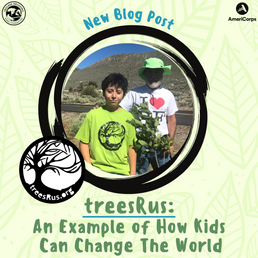Coast to Coast: Exploring the Wonders of Wetlands in New Jersey and Nevada
- Alexandra Sheehan
- Aug 3, 2020
- 3 min read
Updated: Sep 21, 2020
Growing up in New Jersey, my family and I would always drive past various wetlands on our way to the shore or see them scattered along the Delaware River as we drove into Pennsylvania. They served as a place of transition between water and land, but were never the main attraction. They were a common occurrence contributing to the oppressive humidity that locals and tourists alike would complain about, yet they served as vital ecosystems to the wildlife in New Jersey. When I found out I would be relocating to Nevada, wetlands were not the first thing I thought of. I imagined expansive deserts with the occasional outcropping of mountains. This vision proved accurate, for the most part, as I drove along the interstate. However, it was not what I saw when I arrived in Reno. As the driest state in America, wetlands play an essential role in preserving Nevada’s wildlife. So how do these wetlands out here compare to the ones back home?

The Tacony-Palmyra Bridge across the Delaware River as seen from Amico Island Park in Riverside, NJ
Being on opposite ends of the country, wetlands in New Jersey and Nevada were formed differently, and as a result, have different characteristics. Wetlands in New Jersey formed as the result of glaciers retreating as the planet warmed, carving out crevices for the melting water to fill and the rising sea level to invade. These geological processes have resulted in wetlands that are filled by the ocean, lakes, and rivers. Alternatively, wetlands in Nevada are often formed alongside a body of water, or are the result of a part of a river being cut off, thus forming a separate body of water located next to the river or dependent on groundwater.

A well established wetland in Amico Island Park in Riverside, NJ
Due to the differences in formations and sources, the types of wetlands in New Jersey and Nevada vary. New Jersey contains a mix of marine wetlands that are connected to the ocean, estuarine wetlands, which contain a mix of saltwater and freshwater, and riverine and lacustrine wetlands, which form along rivers and lakes, respectively. The marine and estuarine wetlands in New Jersey are responsible for protecting the shore line, especially now with the increasing storms. With Nevada being a landlocked state, its wetlands are largely freshwater; containing a mix of riverine and lacustrine wetlands and wet meadows, which help control flash floods and provide relief during periods of drought.

The proposed nature study area overrun with invasive White Top

Wetlands in New Jersey and Nevada are both home to a variety of aquatic plant and animal species. These species have adaptations that allow them to live in moist conditions. Both wetlands also serve as a stopping point for migratory birds. Wetland plants in Nevada have to be able to handle seasonally dry conditions. Unfortunately, wetlands in both states are susceptible to invasive species that can inhibit growth of native plants and harm the health of the wetland. There are projects all across the country, including here at the Proposed Nature Study Area, working to remove such invasive species from wetlands suffering under these conditions.
Often referred to as “nature’s kidneys”, wetlands all across the country filter water and provide a place where snowmelt and rainwater can run off into and prevent flooding. Here at the Proposed Nature Study Area, and all across the county, wetlands are a source for educational and recreational activities. Despite their differences in location and formation, wetlands in both Nevada and New Jersey are crucial habitats for a variety of wildlife. My hope is that throughout my time here at the Parks Foundation, I can show you all the importance of preserving wetlands in Nevada, the wonders and beauty they hold, and how restoring this wetland means preserving an ecosystem that benefits humans, animals, and plants now and for generations to come.













Click here provide members with discounts on over-the-counter medications, vitamins, and health essentials, promoting better health management and cost-effective wellness solutions. kaiserotcbenefits.com - more details here
Click here help you find recent death notices, providing information about funeral services, memorials, and tributes for loved ones in your area. obituariesnearme.com - more details here
Click here? Many users have had mixed experiences with the platform, so it's important to read reviews and verify deals before booking. istravelurolegit.com - more details here
代发外链 提权重点击找我;
google留痕 google留痕;
Fortune Tiger Fortune Tiger;
Fortune Tiger Fortune Tiger;
Fortune Tiger Slots Fortune…
站群/ 站群;
万事达U卡办理 万事达U卡办理;
VISA银联U卡办理 VISA银联U卡办理;
U卡办理 U卡办理;
万事达U卡办理 万事达U卡办理;
VISA银联U卡办理 VISA银联U卡办理;
U卡办理 U卡办理;
온라인 슬롯 온라인 슬롯;
온라인카지노 온라인카지노;
바카라사이트 바카라사이트;
EPS Machine EPS Machine;
EPS Machine EPS Machine;
EPS Machine EPS Machine;
google 优化 seo技术+jingcheng-seo.com+秒收录;
Fortune Tiger Fortune Tiger;
Fortune Tiger Fortune Tiger;
Fortune Tiger Fortune Tiger;
Fortune Tiger Slots Fortune…
站群/ 站群
gamesimes gamesimes;
03topgame 03topgame
EPS Machine EPS Cutting…
EPS Machine EPS and…
EPP Machine EPP Shape…
Fortune Tiger Fortune Tiger;
EPS Machine EPS and…
betwin betwin;
777 777;
slots slots;
Fortune Tiger Fortune Tiger;
EPTU Machine ETPU Moulding…
EPTU Machine ETPU Moulding…
EPTU Machine ETPU Moulding…
EPTU Machine ETPU Moulding…
EPTU Machine ETPU Moulding…
EPS Machine EPS Block…
EPS Machine EPS Block…
EPS Machine EPS Block…
AEON MINING AEON MINING
AEON MINING AEON MINING
KSD Miner KSD Miner
KSD Miner KSD Miner
BCH Miner BCH Miner
BCH Miner BCH Miner